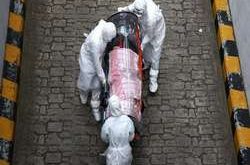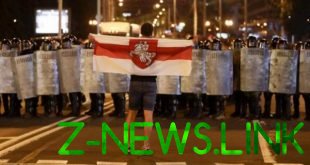
A couple of months ago I posted in his Twitter a scene from the film “one Hundred grams for courage”, which sold around a thousand likes, almost a thousand retweets and hundreds of thousands of hits. Still under the tweet had nearly 200 comments — some commentators were surprised by the part confirmed that all was well, and another part stated that it’s all lies)
What was in that tweet? In it I posted a frame from a little-known Soviet film, where the shown assortment of Soviet grocery “glass” in the Moscow residential area. This frame puts an end to all the fantasies of fans of the Soviet Union that “before perestroika in the Soviet Union there lived a very satisfying” — the movie was filmed in the mid-seventies, when no reorganization has no smell. In my opinion, these film stills are much truer than any photos can be staged, whereas the shops in the films showed a glimpse, and nothing was cooked — was just a backdrop for the actions of the characters.
So in today’s post we see firsthand how poor the range was in Soviet grocery stores. Come under kat, there interesting. Well, friends to add do not forget)
02. So here’s my same tweet. As you can see, underneath 175 reviews — most users agreed that the USSR lived very poor before and during perestroika, but there were those who argued that it was all some fake, photo staging, and in fact the shelves in the shops were bursting with abundance.

03. Let’s take a closer look at these shelves and study this screenshot. Frame taken from a little-known film “one Hundred grams for courage” — it represents the anti-alcohol agitation and consists of three novellas United by one plot — the excessive and untimely consumption of “intoxicating”. For our study especially interesting is that the film was made in 1976 — that is, in the midst of the Brezhnev era and almost 10 years before “damned perestroika”.
A little about the plot of the novel — the main character (it takes a remarkable actor Nikolay Grinko known you on the role of Pope Carlo in “the Adventures of Pinocchio” and Professor at the “Stalker”) is to get acquainted with a lonely neighbor, but did not dare to call her in the door, and decides a little “cut” for bravery in the shop. Lives in Moscow district Chertanovo, and first comes to the store, and a deli buffet.
Assortment way too very poor, it can be seen at several frames — several types of candies, cookies, something like a couple of bars of chocolate and that’s all.

04. The barmaid says to the hero that there is not poured, and sends it to a grocery store. In the store there is a very remarkable episode in which the hero is a line at the wine and spirits Department, and more experienced drunks tell him the names of the containers and explain the difference between “chekushku” and “little rascal”. And yet there is very vividly transferred to the boorish tone of communication of the Soviet saleswoman with buyers.

05. And here we come to the most interesting) At that time, as the hero Grinko standing in line, his companion (in a brilliant performance Borislav Brondukov, which is very nice and accurately depicted the Soviet drunks) in the dreary anticipation, scratching his unshaven neck and walk around the store, and we can detail the display of products. Showcase show just a few seconds, during which the viewer has time only to note that they are not empty, but let’s put that on pause and see what we’re seeing here.
On the left you can see the mountain of cans with condensed milk, with the classic blue-blue label. A little to the right there are smaller hills, the banks with a yellow label, it’s most likely condensed cream — essentially the same as the regular “condensed milk”, but fatter. On the top shelf between two mountains lonely cans huddle some three small jars with something dark — it’s either the Abkhazian adjika, or some jam.
On the lower shelves are huge and dreary bottles with Apple juice, and in the background one can see the wooden crates with empty bottles.

06. So, you can say, but it’s not the whole window? A few shots later, the camera travels from right to left, we can see the middle of the viewer to the edge of the rack — there are only some jars with pickled cabbage or soups, something like “pickle soup with barley”.

07. And yet a few frames later, the camera returns to Brondukov, and you can see what’s between the pickle and the banks with condensed milk — a few bottles with what looked like lemonade. That’s all.

08. Interestingly, the alcohol selection in the store is also extremely poor, it can be seen in several shots in the film — 1-2 types of vodka, 2-3 kinds of cheap fortified wine, and nothing more.

09. Well and that two times not to rise, let’s analyze at the same time and another episode in the Moscow store, which features in the famous film “Moscow does not believe in tears”, filmed in 1980 — that is, too long before the “cursed perestroika”. The heroine (performed by Faith Alentova) named Katerina walks around the Mall a Soviet grocery store, in between all those endless rows of the same type of cans.
Please note that the products actually very little, all the Windows are crammed to the eyeballs, but crammed with the same type of cans and bottles — around the long row of shelves to the left is no more than 7-8 different products, and on the rack to the right because generally only some one product.

10. What happens next is interesting. Katerina continues to collect cans in the cart, when suddenly in the background appears the clerk with a cart, in which is sliced boiled sausages — in General, considered the world cheap and trivial product. For a saleswoman already crowded queue of buyers.

11. As soon as the truck stops — buyers immediately jumped on the sausage. Katherine also leaves his truck with the banks and goes for the sausage:

12. The guy in the cap missing two piece and hurries hurry to get out of the queue. Show this frame to all those who tells fables about billions of types of sausages that bunches hung in the Brezhnev era in any store.

13. It is also noteworthy behavior Catherine — she first takes a piece of sausage, then it goes back to your cart and only then reads the name, in fact, that she took. It is nothing like the years developed the habit to first take a deficit, and then see what it is; if you delay — you will remain without the sausage.
It is easy to guess that the buyers who came to the store five minutes later, no sausage is no longer received, and saw all those dreary rows of cans of sugared water with the proud label “birch SAP”.

Such cases. As you can see — poor range of shops was not only “restructuring” and the “damned nineties”, and in the midst of the Brezhnev years. And it in Moscow, in the capital.
Write in the comments what you think about it.
© 2019, paradox. All rights reserved.





